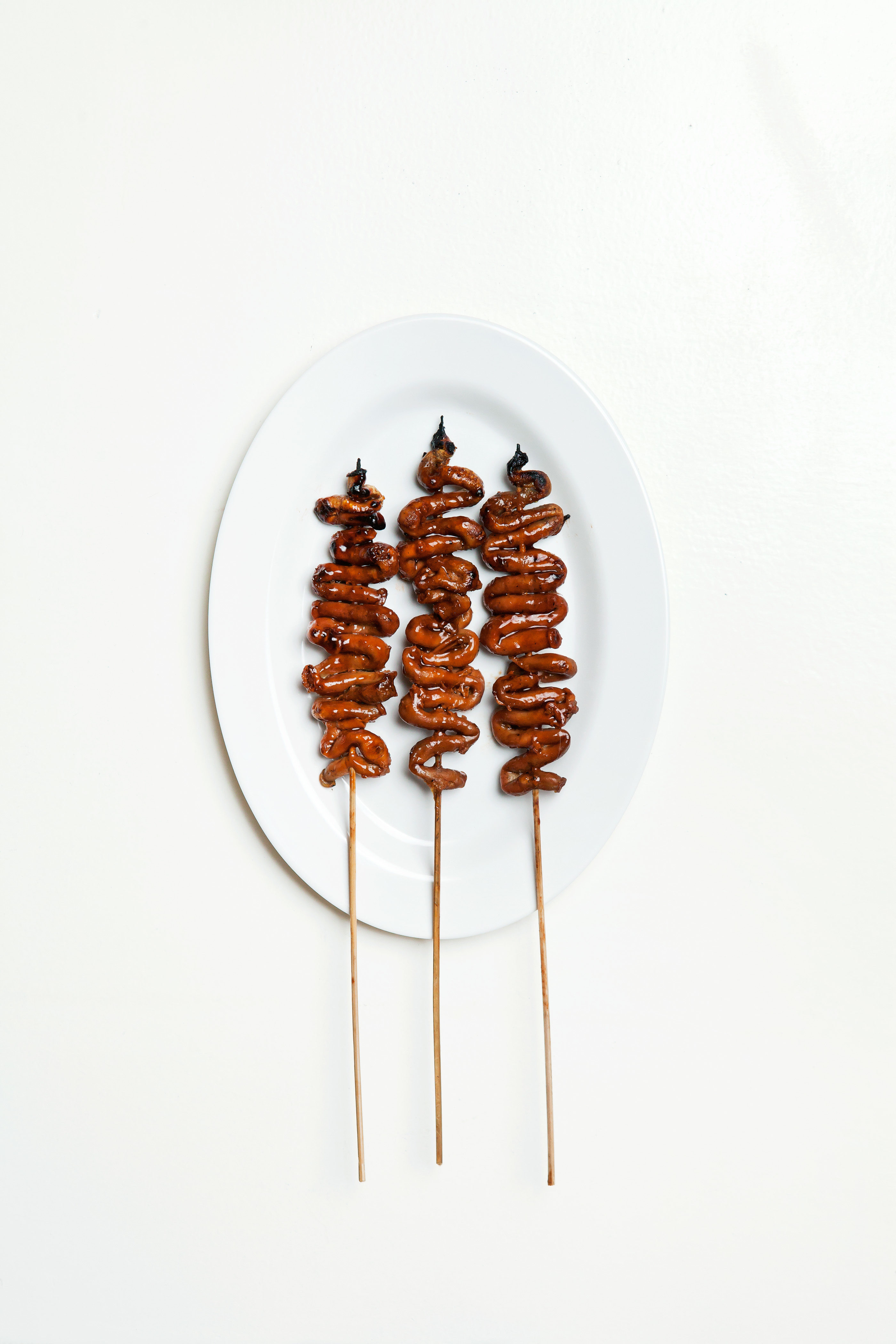“Dirty” ice cream/sorbetes

The sound of the bell ringing from the street is a childhood memory that reminds one of getting a sweet treat on a hot, sunny day. Dirty ice cream, as it is infamously called, is usually sold on the streets by vendors riding a four-wheel bicycle. Also called sorbetes, the ice cream was created to put excess fruit harvests to good use during summer.
Food hack: Coconut milk is the secret ingredient to this cheap guilty pleasure, while some use carabao’s milk. It is then mixed with white sugar, egg yolk, and thickener. Unlike commercial ice cream that is processed through an ice cream maker, sorbetes is only whisked until a smooth texture is attained. It is then strained to ensure that there are no solid bits left. It is refrigerated until mixture thickens and then mixed with a purée of a chosen flavor. After a quick whisk, it is chilled overnight and ready for selling the next day.
Kwek kwek and tokneneng

Kwek kwek is a quail egg while tokneneng is a chicken or duck egg, both cooked in the same orange batter. It is said that it was accidentally discovered by a balut vendor after he dropped the eggs on the floor and tried to save it by frying what was left of it. Then it became practice that balut and penoy vendors would sell their leftover eggs from the night before to carinderias at a lower price for them to deep fry and serve with spiced vinegar.
Food hack: The Pinoy tempura’s breading is basically made of flour with cornstarch, water, salt, and pepper. The secret to its orange hue is not food coloring but annatto powder, which can be bought in local markets. Dip the peeled quail eggs into the batter and deep fry until crispy.
Balunbalunan, isaw, and walkman

In the Spanish colonial period, Filipinos, considered second-class citizens by Spaniards, were deprived of decent meals. The Spaniards kept the prime cuts of pork, chicken, and beef to themselves and gave away the rest—including animal innards—to Filipinos. With intentions to create something appetizing, our ancestors cleaned these parts, skewered them into bamboo sticks, and grilled them also inventing a special barbecue basting sauce for flavor.
Food hack: Make sure to clean the balunbalunan (chicken gizzard), isaw (pork or chicken intestine), and walkman (pig’s ears) thoroughly. Apart from water, put white vinegar, peppercorn, salt, garlic, bay leaves into a pot. Bring to a boil for 30 minutes. Gizzard needs an extra 15 minutes to cook. Drain the water and let it cool down. Skewer the innards and prepare the basting sauce, which is a combination of soy sauce, water, sugar, ketchup, and sugar, for grilling.
This story was originally published in Northern Living, October 2014.












































